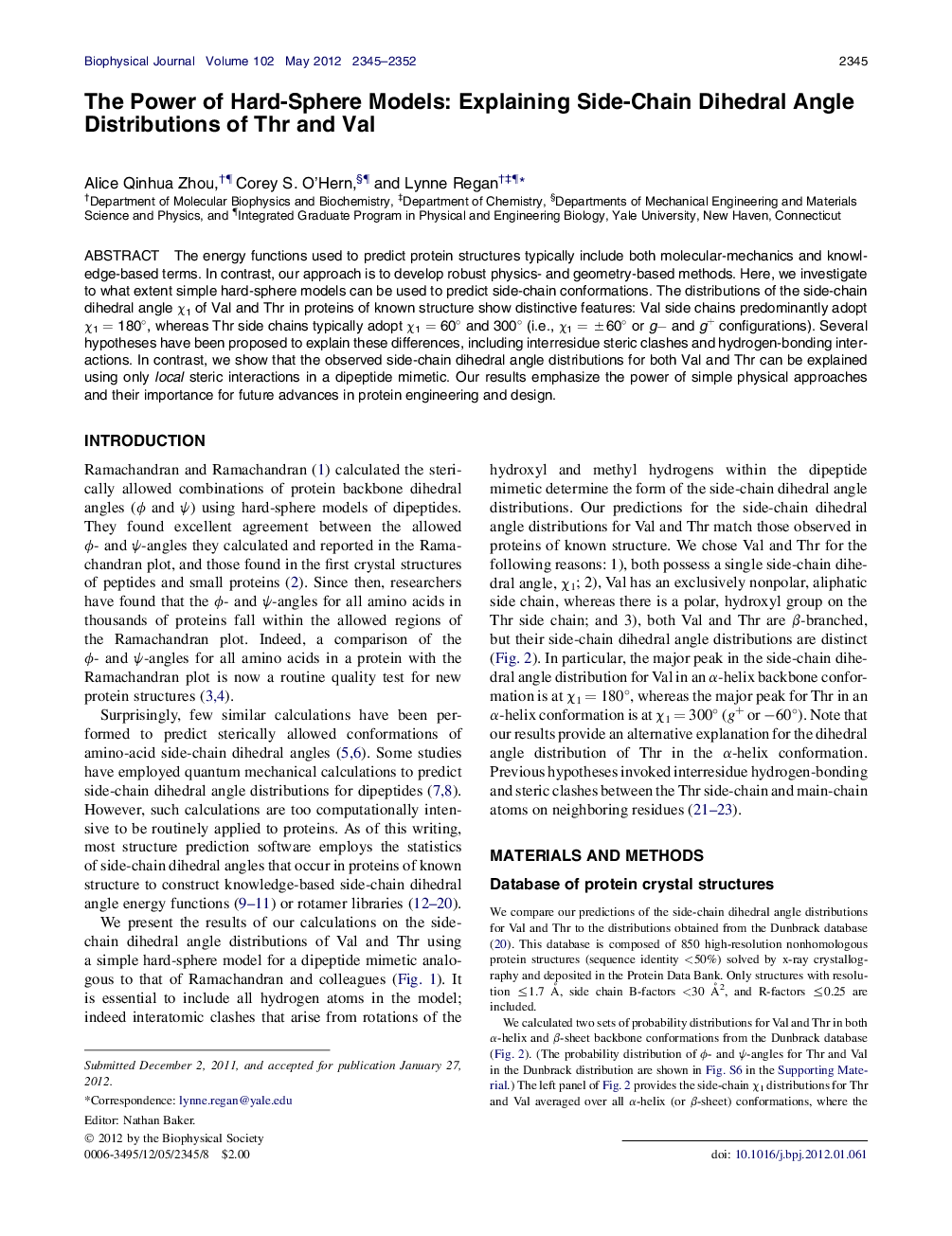| Article ID | Journal | Published Year | Pages | File Type |
|---|---|---|---|---|
| 1954552 | Biophysical Journal | 2012 | 8 Pages |
The energy functions used to predict protein structures typically include both molecular-mechanics and knowledge-based terms. In contrast, our approach is to develop robust physics- and geometry-based methods. Here, we investigate to what extent simple hard-sphere models can be used to predict side-chain conformations. The distributions of the side-chain dihedral angle χ1 of Val and Thr in proteins of known structure show distinctive features: Val side chains predominantly adopt χ1 = 180°, whereas Thr side chains typically adopt χ1 = 60° and 300° (i.e., χ1 = ±60° or g− and g+ configurations). Several hypotheses have been proposed to explain these differences, including interresidue steric clashes and hydrogen-bonding interactions. In contrast, we show that the observed side-chain dihedral angle distributions for both Val and Thr can be explained using only local steric interactions in a dipeptide mimetic. Our results emphasize the power of simple physical approaches and their importance for future advances in protein engineering and design.
